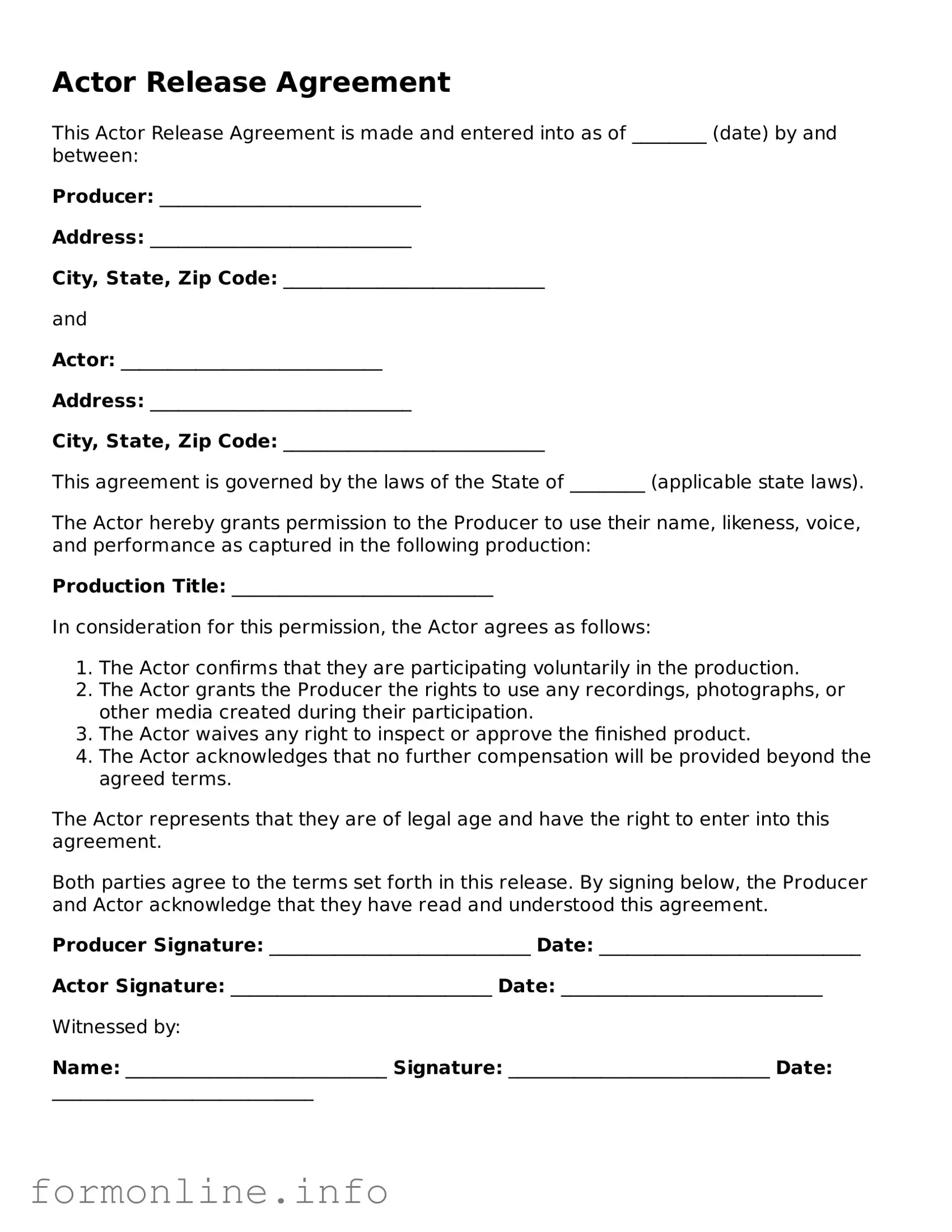Actor Release Agreement
This Actor Release Agreement is made and entered into as of ________ (date) by and between:
Producer: ____________________________
Address: ____________________________
City, State, Zip Code: ____________________________
and
Actor: ____________________________
Address: ____________________________
City, State, Zip Code: ____________________________
This agreement is governed by the laws of the State of ________ (applicable state laws).
The Actor hereby grants permission to the Producer to use their name, likeness, voice, and performance as captured in the following production:
Production Title: ____________________________
In consideration for this permission, the Actor agrees as follows:
- The Actor confirms that they are participating voluntarily in the production.
- The Actor grants the Producer the rights to use any recordings, photographs, or other media created during their participation.
- The Actor waives any right to inspect or approve the finished product.
- The Actor acknowledges that no further compensation will be provided beyond the agreed terms.
The Actor represents that they are of legal age and have the right to enter into this agreement.
Both parties agree to the terms set forth in this release. By signing below, the Producer and Actor acknowledge that they have read and understood this agreement.
Producer Signature: ____________________________ Date: ____________________________
Actor Signature: ____________________________ Date: ____________________________
Witnessed by:
Name: ____________________________ Signature: ____________________________ Date: ____________________________
